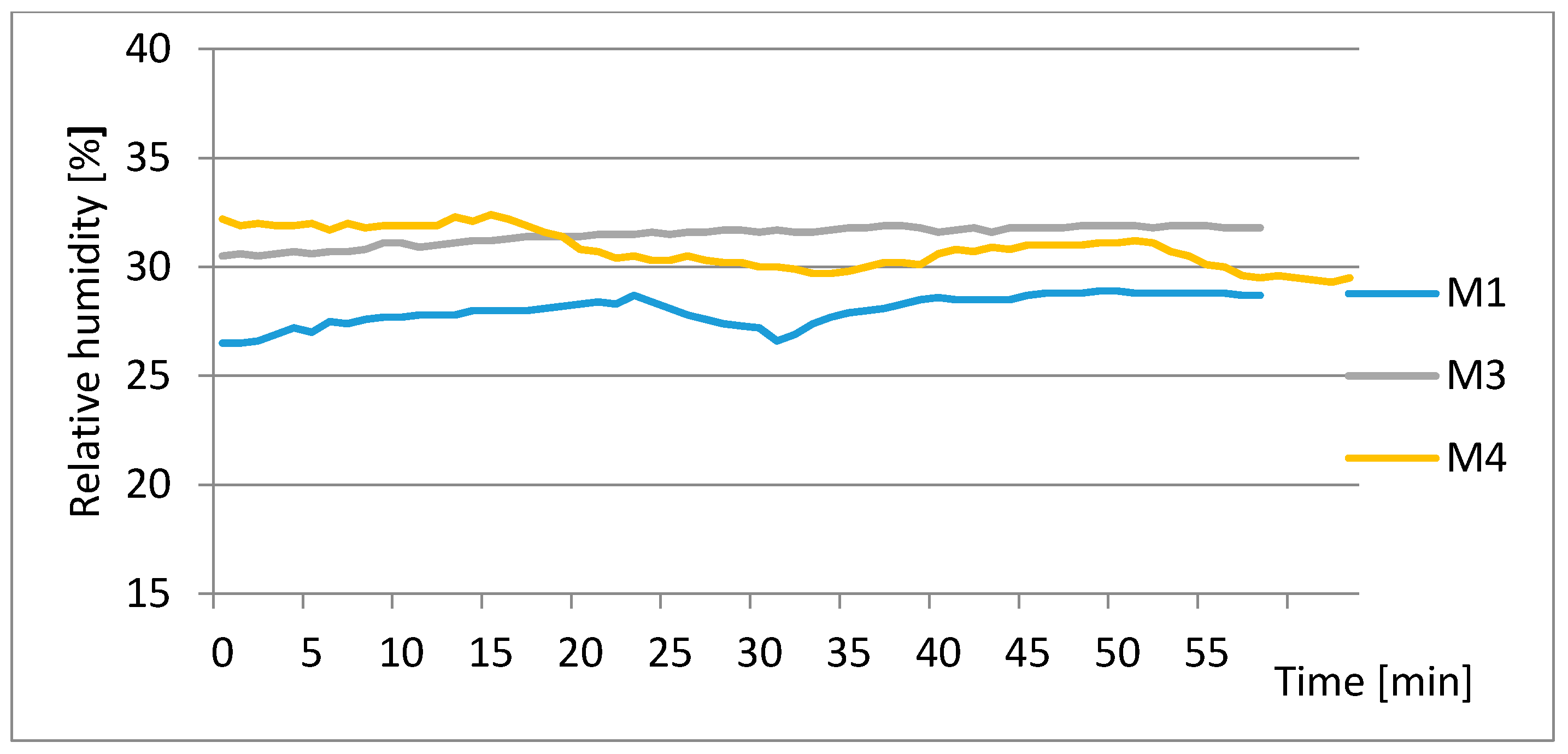Relative Humidity during Antenatal Classes—A Case Study †
Abstract
:1. Introduction
2. The Materials and Methods
3. Results
4. Summary and Conclusions
Author Contributions
Acknowledgments
Conflicts of Interest
References
- ASHRAE Standard 62-2001, Ventilation for acceptable Indoor Air Quality; ASHRAE: Atlanta, GA, USA, 2001.
- Rytlewski, K. Physiological maternal changes during pregnancy and their consequence in GP-practice. Prz. Lek. 2008, 65, 195–202. [Google Scholar]
- Śmiełowska, M.; Marć, M.; Zabiegała, B. Indoor air quality in public utility environments—A review. Environ. Sci. Pollut. Res. Int. 2017, 24, 11166–11176. [Google Scholar] [CrossRef] [PubMed]


Publisher’s Note: MDPI stays neutral with regard to jurisdictional claims in published maps and institutional affiliations. |
© 2019 by the authors. Licensee MDPI, Basel, Switzerland. This article is an open access article distributed under the terms and conditions of the Creative Commons Attribution (CC BY) license (https://creativecommons.org/licenses/by/4.0/).
Share and Cite
Zielinko, P.; Krawczyk, D.A. Relative Humidity during Antenatal Classes—A Case Study. Proceedings 2019, 16, 43. https://doi.org/10.3390/proceedings2019016043
Zielinko P, Krawczyk DA. Relative Humidity during Antenatal Classes—A Case Study. Proceedings. 2019; 16(1):43. https://doi.org/10.3390/proceedings2019016043
Chicago/Turabian StyleZielinko, Paulina, and Dorota Anna Krawczyk. 2019. "Relative Humidity during Antenatal Classes—A Case Study" Proceedings 16, no. 1: 43. https://doi.org/10.3390/proceedings2019016043
APA StyleZielinko, P., & Krawczyk, D. A. (2019). Relative Humidity during Antenatal Classes—A Case Study. Proceedings, 16(1), 43. https://doi.org/10.3390/proceedings2019016043





